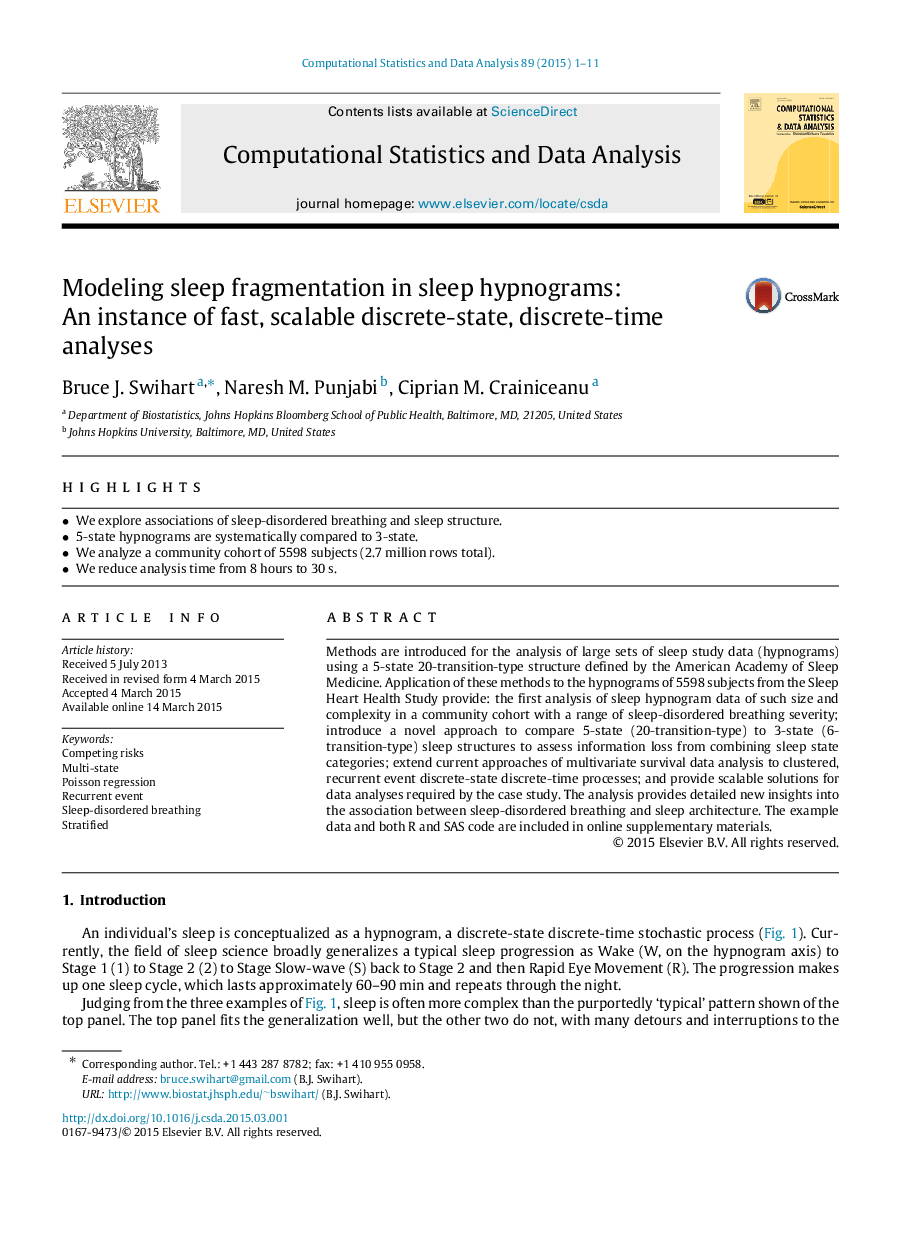| Article ID | Journal | Published Year | Pages | File Type |
|---|---|---|---|---|
| 6869562 | Computational Statistics & Data Analysis | 2015 | 11 Pages |
Abstract
Methods are introduced for the analysis of large sets of sleep study data (hypnograms) using a 5-state 20-transition-type structure defined by the American Academy of Sleep Medicine. Application of these methods to the hypnograms of 5598 subjects from the Sleep Heart Health Study provide: the first analysis of sleep hypnogram data of such size and complexity in a community cohort with a range of sleep-disordered breathing severity; introduce a novel approach to compare 5-state (20-transition-type) to 3-state (6-transition-type) sleep structures to assess information loss from combining sleep state categories; extend current approaches of multivariate survival data analysis to clustered, recurrent event discrete-state discrete-time processes; and provide scalable solutions for data analyses required by the case study. The analysis provides detailed new insights into the association between sleep-disordered breathing and sleep architecture. The example data and both R and SAS code are included in online supplementary materials.
Keywords
Related Topics
Physical Sciences and Engineering
Computer Science
Computational Theory and Mathematics
Authors
Bruce J. Swihart, Naresh M. Punjabi, Ciprian M. Crainiceanu,
